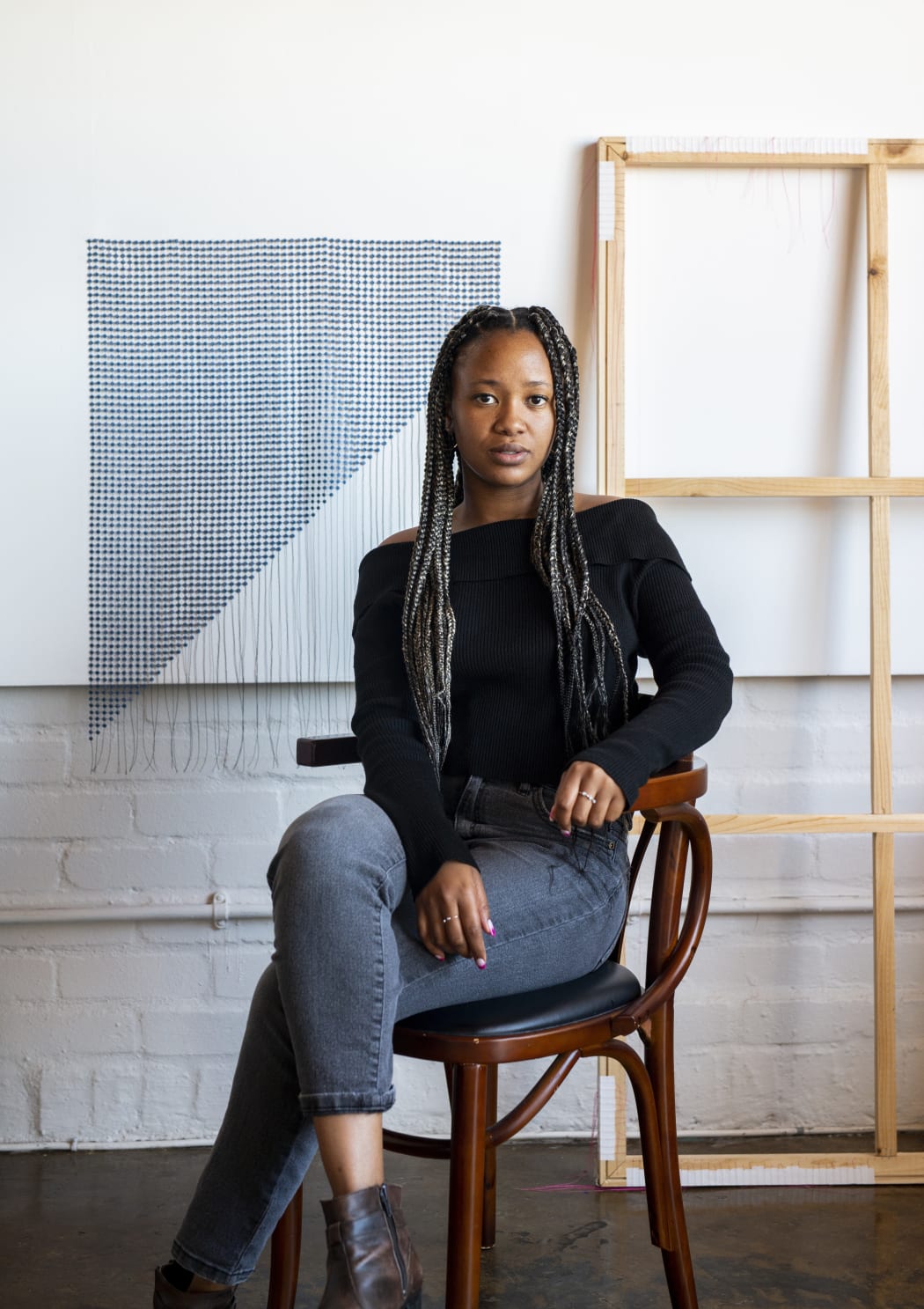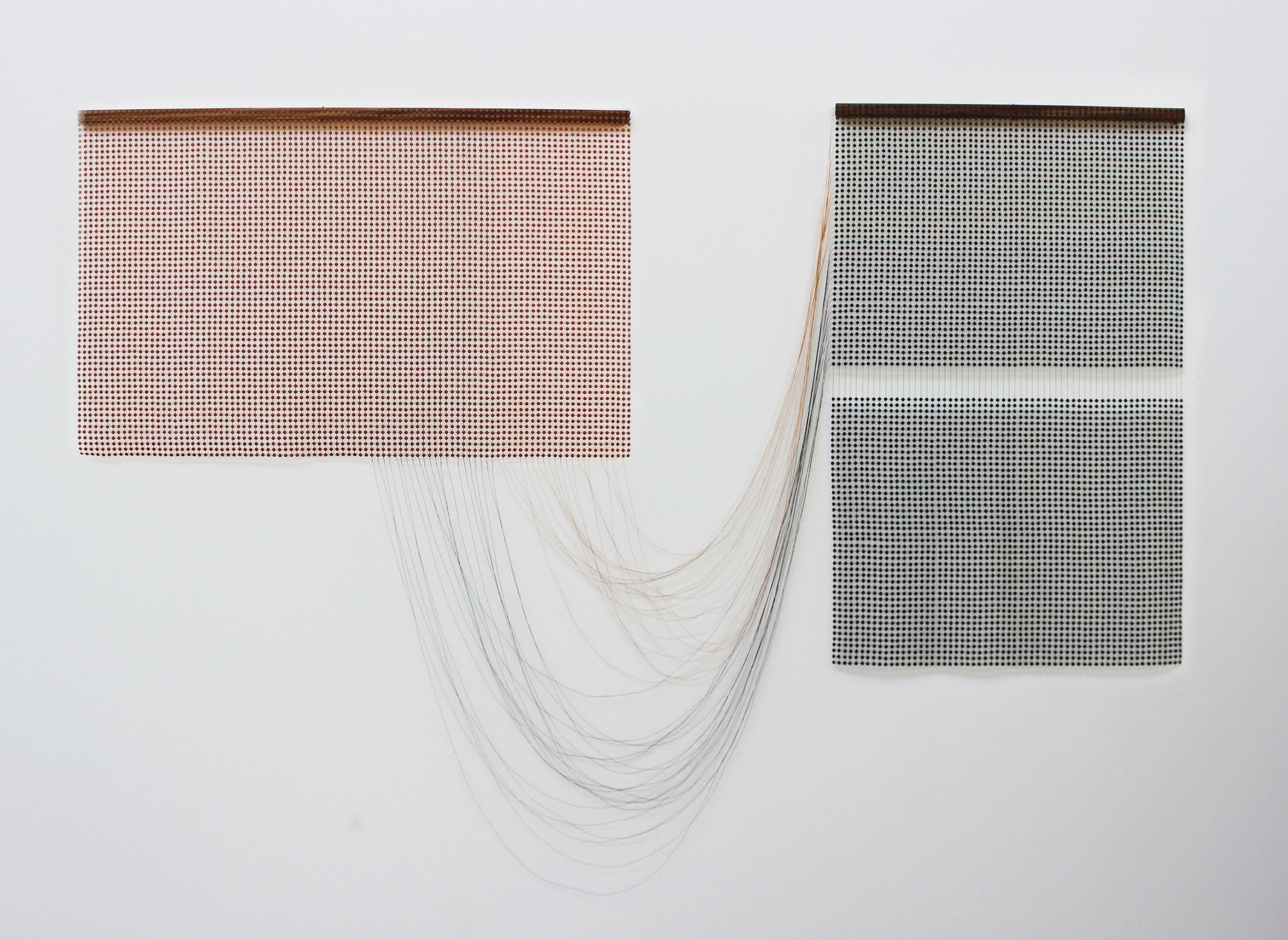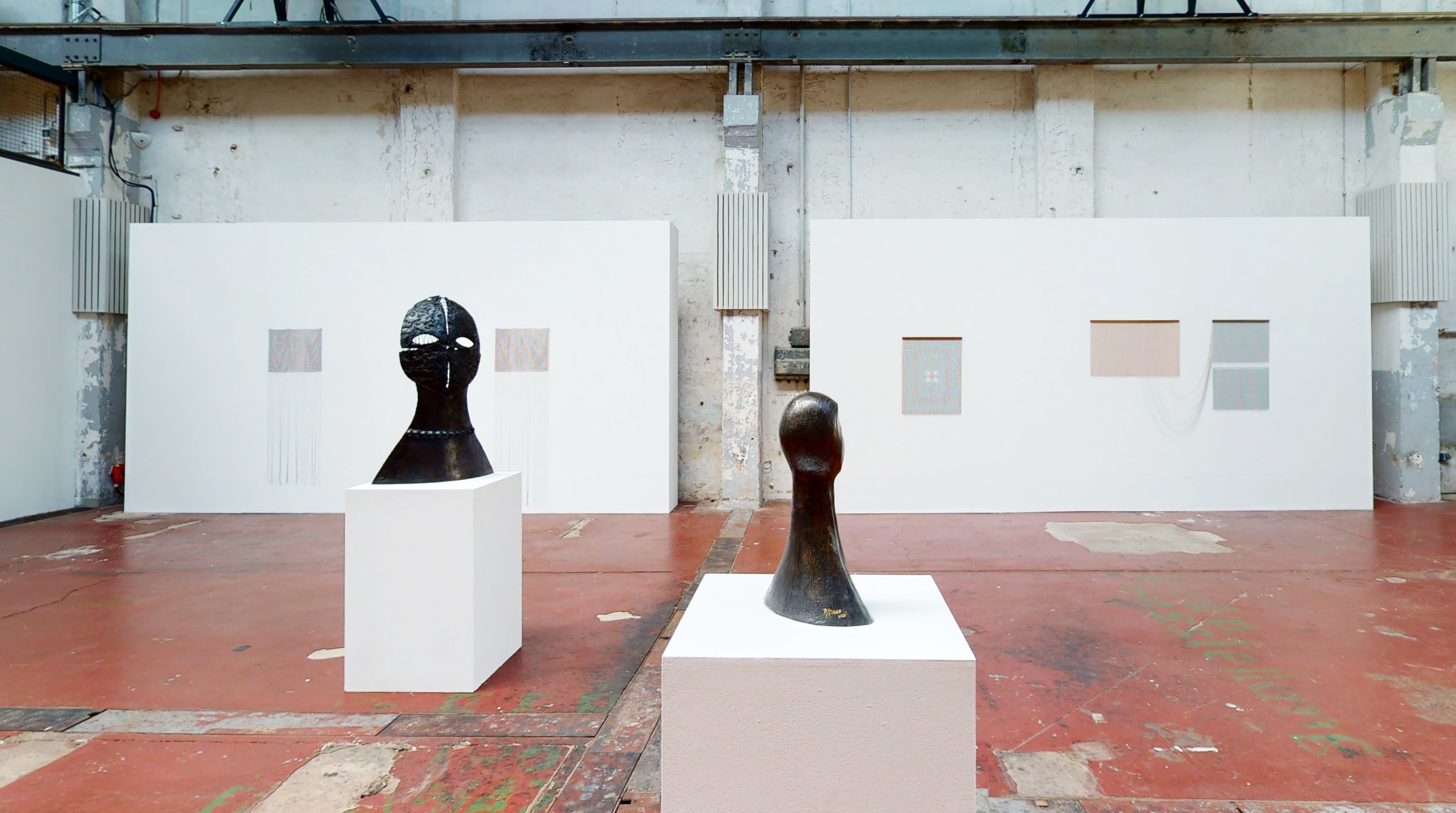
Let’s talk about your academic background. You have obtained a BA from the Michaelis School of Fine Art (Cape Town), majoring in printmaking. To which extent has the university contributed to your development as an artist?
I didn’t grow up knowing that one could become an artist. I always thought it was just a way of being and doing. I grew up in a small town (editor’s note: Kimberley, South Africa) that didn’t have any galleries or an art scene at all. We only have the William Humphrey’s art gallery which acts more like a museum. Being at Michaelis exposed me to artists, and artists who were also lecturers and we did a lot of gallery visits and we were thrown into the culture of the art industry and it was the best place to learn it all. Besides being taught by really great lecturers I also met other young aspiring artists and we influenced one another to be the best in our respective fields. I had to be at Michaelis to understand the full scope of what being an artist means.
You have elaborated a very special technique, combining print with design, painting and even sculpture. Could you please describe your artistic path? What did you start from and how has your art been developing since then?
I went to Michaelis because I wanted to become a painter. While I was there I was introduced to printmaking in depth and I really got into it because it was such a process led medium and I guess it suited the way I think. I thrive under order and instruction and anything led by rules so I became more print inclined as a student. I wanted to do something with printmaking that was abstract and technical at the same time. I started from looking at abstract artists and conceptual artists. I really make the kind of art that I enjoy seeing myself: simplistic yet complicated intricate works of art. Agnes Martin, e.g., is an artist whose work I found great pleasure in discovering as a student. Printmaking is also very political for me considering its history in the South African context, so I needed to respond to the history of printmaking while creating contemporary works of art. In 2010 I met Dumisani Mabaso in Kimberley at a print workshop he was offering to students. He became someone I admired and I would ask about his history as an artist. And one thing that stuck with me was how he said making abstract art in the 70s as a black artist was quite rebellious. I was always intrigued by that, so in a way I wanted to respond to that fact. For a long time black artists in South Africa were expected to make a certain kind of art and I wanted to do the opposite as a student.

© Bonolo Kavula, Surrender, 2022, Shweshwe, thread, wood, 84 x 65 x 1.5 cm / 33 1/8 x 25 5/8 x 5/8 in. Image: Dominique Suberville
What is the main idea, or the key message, you would like to communicate to the audience? What topics do you address and why? What shall people take away from your art?
When I create my work I am offering a point of introspection; a quiet introspection for the viewer. The same feeling of stillness you get when you look at an Agnes Martin painting, and it is the feeling I want to achieve in my work: to quiet down the noise of the everyday and to push people to a moment of stillness. I want my art to make people stop in their tracks even if for a brief second. We forget to pause and we forget that there is beauty in the chaos. I want to tap into a human condition that allows to remember that life is beautiful and my art is an imitation of that. Life is hard but it is also fleeting and if we don’t pause we will forget that there is beauty amongst the chaos. My art serves as a reminder of that. And I think because I understand the deepest sorrow I am able to create something to ease that. You can’t really offer an aid to something you don’t understand, right? So its through my own personal chaos that I can offer a “material peace of mind”. When people look at art they expect to be told something and leave with a message, but I want to create work that allows the viewer to find a message or a feeling within themselves. When you are forced to look at and see something and detach from all that is around you, you begin to confront your own thoughts and your own beliefs. We are all filled with so much and I want people to resonate with the work in a way that is personal to them.
Your technique and particularly the materials you use are truly unique – I mean shweshwe, a printed dyed cotton fabric widely used for traditional Southern African clothing. What does this fabric symbolize for you?
I have always been experimenting with different materials. For a while I used paper and canvas when I was using the office punch to get the round discs, but after a while it started to feel empty. I needed to use a material that was loaded with meaning. I started thinking and the use of the shweshwe fabric came to mind. I have a dress that belongs to my late mother and when that came up it made so much sense because there was a personal connection which meant I was making the art from a sentimental place. But then I realised how much the fabric is a part of South African culture. The timing of the use of the fabric was perfect because it was also around the time that I began acknowledging my ancestors. For many others this fabric symbolises different milestones in life. In my culture when women get married they wear the red shweshwe to indicate that they are now married. Shweshwe fabric has a lot of cultural significance to South Africans.

© Bonolo Kavula, I have such love to give, 2022, Shweshwe, thread, wood, 158 x 100 x 1.5 cm / 62 1/4 x 39 3/8 x 5/8 in. Image: Dominique Suberville
Speaking about the materials – you frequently use found objects, such as magazine paper, chappies wrappers or cardboard boxes, transforming them into art objects. What is the main idea behind it?
I have always liked the challenge of changing ones perspective on a material. For instance cardboard seems so rigid but I like the idea of playing with the possibilities of what it can do. I like to be surprised when I play and experiment with materials. I often choose everyday materials that seem boring at first glance and use them to completely change ones material understanding of them. Honestly, it is a lot of fun: it feels like a creative science experiment.
You have once described your art as your “kind of therapy”. Could you please tell us a little bit about the technical aspect – how does the process of creating looks like? What happens behind the studio doors?
The technical aspect is tedious and long but very rewarding at the end. My process requires precession and needs one to be focused. I call it my therapy because it feels like a very meditative practice. I cannot make my work and be detached from myself. It requires my presence and absolute attention. When I discovered that Agnes Martin was diagnosed with paranoid schizophrenia in her early adulthood, I was surprised considering how quiet and detailed her artworks were. At that moment I realised the amount of will power it must have taken to create her artworks and to command stillness and focus while making them. I respected her even more for that. I felt like when she was developing an artwork she was winning over her mind. It gave me a kind of permission to do the same. And so as tedious as my work is, I need it to calm my own anxiety and the noise in my head. That is why I say the work offers calm because it comes and is made from a place of calm.
The year 2021, despite the world pandemic, was quite productive for you – you have had your first solo exhibition at Cape Town’s SMAC gallery and showed your works at Art Basel Miami. Is there any difference in the way your art has been perceived by the local vs. international audience?
Showing at Art Basel Miami was the biggest encouragement for me. It made me feel that the abstract works I was making had an audience. It was also great being present at the fair and engaging with people in the booth. I have a lot of support locally and a lot of my peers and other people who appreciate my work and I am driven by that. I am happy that my gallerist was brave enough to trust in my work and my process and it paid off. I would also say that it is harder to push abstract work locally than abroad.

© Bonolo Kavula, Agang, 2021, Punched Shweshwe, thread, oak, 89 x 71 x 2 cm / 35 x 28 x 6/8 in. Image: SMAC Gallery
Just recently you have received the 2022 Norval Sovereign African Art Prize. Could you please tell us a bit more about it? What artworks did you apply with and what does this award means for you?
I still have to remind myself that it indeed happened. I was nominated by Andrea Lewis who is a curator at the Iziko South African National Gallery to enter an artwork for the prize. The nomination came as a surprise and I am so grateful for that. I remember thinking that I needed to use this opportunity to really outdo myself and any artwork I had created to date. It was an exciting challenge and I was just happy to be shortlisted in the top 30. The artwork I entered was titled “Tswelepele” which means progress or advancement. I chose that title because that was my state of mind at the time. I was striving to do better and be better and hoping for an advancement in the way I was thinking about my work and my art in general. It was also the first artwork I made that had geometric shapes and a more bold design. So in a way the artwork is an embodiment of what I was striving for personally. I took a chance and it worked.
Could you please tell us about your upcoming projects and plans? What are you currently working on? What is the most extraordinary project, you would like to bring into life one day in the future?
Part of receiving the 2022 Norval Sovereign African Art Prize is creating a solo exhibition at the Norval Foundation. I am currently working in studio to bring that to life. The show is planned for the end of this year and will be on display for about 6 months. As for my plans, what an amazing question! I have so many creative projects I would love to embark on. I daydream about a performance artwork that will include set design, animation and music. So hopefully that happens soon. I have recently bought a keyboard to learn music so baby steps!

© Installation view ‘Subverted Resistence’ featuring Roberto Diago and Bonolo Kavula. Image: Bode Projects
Interview conducted by Valentina Plotnikova